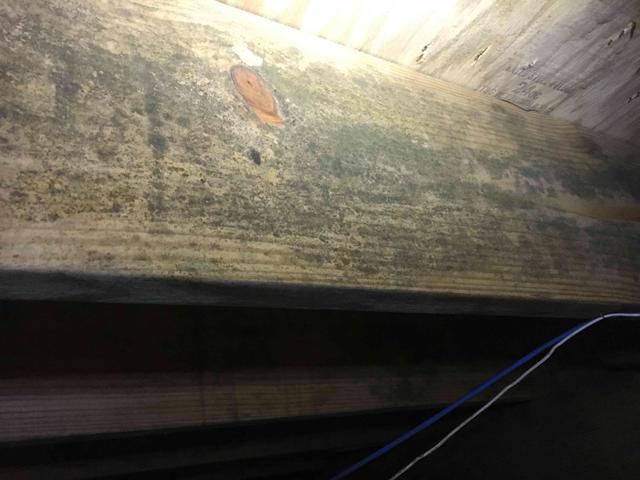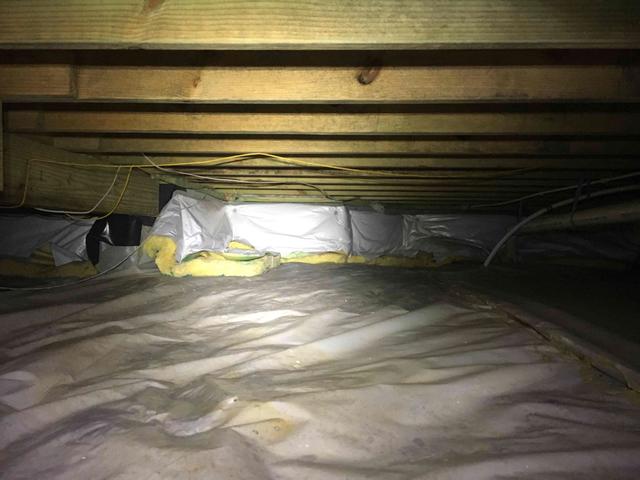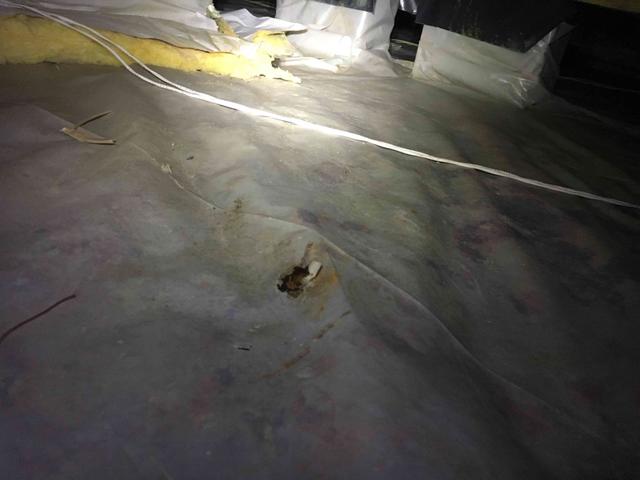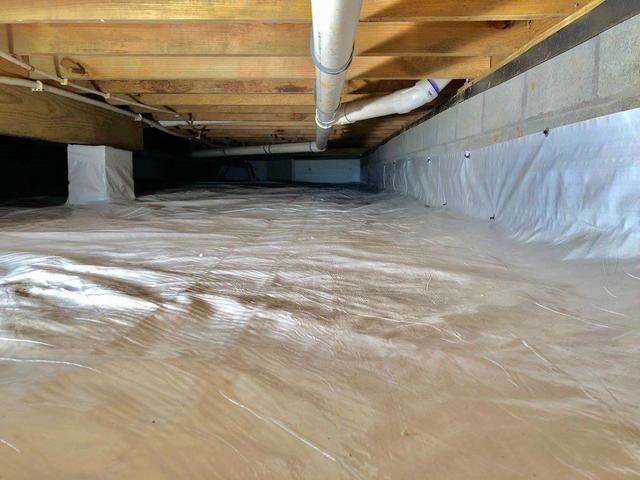
Microbial Growth on Joists & Sub-floor
Mildew/mold needs three things to grow, warm temperatures, a relative humidity over 60% and organic material. In the crawl space, this organic material is typically the joists and sub-floor or paper backing on fiberglass insulation.

Vinyl Faced Fiber-glass on Crawl Space Walls
Vinyl Faced Fiber Glass insulation was previously on the crawl space walls. It was not sealed on all sides. As vapor worked its way through the porous concrete walls, it was absorbed by the fiberglass. Because the fiberglass was open to the crawl space, it did not do an effective job of keeping moisture out.

Punctured Vapor Barrier
6-mil vapor barriers aren't very durable. They are easily torn and displaced by service technicians and any critters that find their way into the crawl space. This allows moisture from the earth to enter the crawl space.

10-mil Vapor Barrier
A 10-mil vapor barrier is more durable than 6-mil, it can withstand service persons crawling on it without displacing or tearing.

Foamax Insulation on Crawl Space Walls
Foamax is a rigid foam board insulation. It is fastened to the foundation walls and all seams are sealed. This creates an air and vapor barrier.

